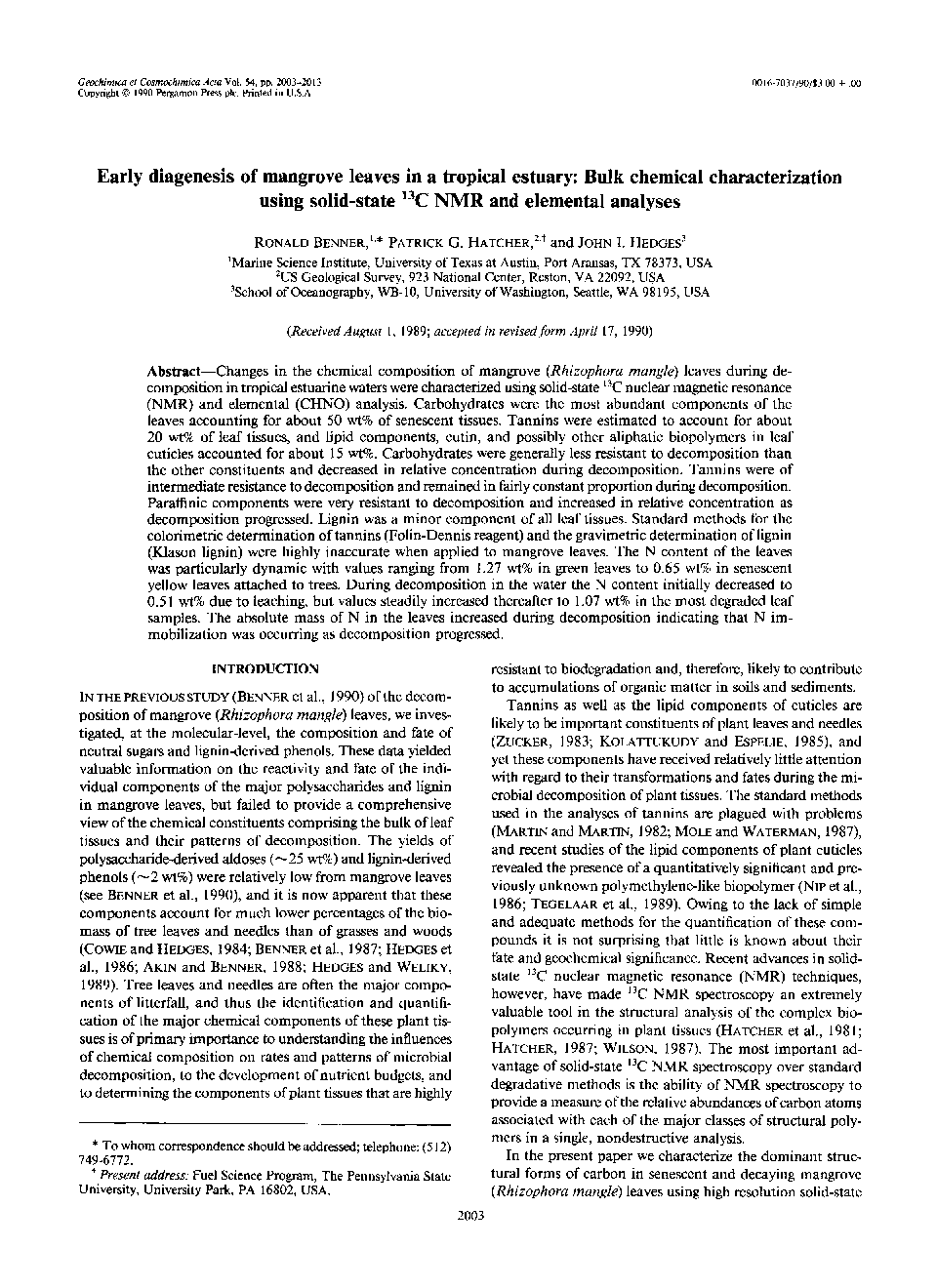| Article ID | Journal | Published Year | Pages | File Type |
|---|---|---|---|---|
| 4710353 | Geochimica et Cosmochimica Acta | 2013 | 11 Pages |
Abstract
Changes in the chemical composition of mangrove (Rhizophora mangle) leaves during decomposition in tropical estuarine waters were characterized using solid-state 13C nuclear magnetic resonance (NMR) and elemental (CHNO) analysis. Carbohydrates were the most abundant components of the leaves accounting for about 50 wt% of senescent tissues. Tannins were estimated to account for about 20 wt% of leaf tissues, and lipid components, cutin, and possibly other aliphatic biopolymers in leaf cuticles accounted for about 15 wt%. Carbohydrates were generally less resistant to decomposition than the other constituents and decreased in relative concentration during decomposition. Tannins were of intermediate resistance to decomposition and remained in fairly constant proportion during decomposition. Paraffinic components were very resistant to decomposition and increased in relative concentration as decomposition progressed. Lignin was a minor component of all leaf tissues. Standard methods for the colorimetric determination of tannins (Folin-Dennis reagent) and the gravimetric determination of lignin (Klason lignin) were highly inaccurate when applied to mangrove leaves. The N content of the leaves was particularly dynamic with values ranging from 1.27 wt% in green leaves to 0.65 wt% in senescent yellow leaves attached to trees. During decomposition in the water the N content initially decreased to 0.51 wt% due to leaching, but values steadily increased thereafter to 1.07 wt% in the most degraded leaf samples. The absolute mass of N in the leaves increased during decomposition indicating that N immobilization was occurring as decomposition progressed.
Related Topics
Physical Sciences and Engineering
Earth and Planetary Sciences
Geochemistry and Petrology
Authors
Ronald Benner, Patrick G. Hatcher, John I. Hedges,
